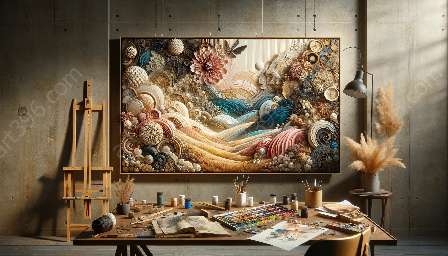As an artist or art enthusiast, you may be passionate about using mixed media to create unique and captivating artworks. However, it's important to consider the environmental impact and sustainability of the materials you use. In this comprehensive guide, we will explore the materials commonly used in mixed media art, their impact on the environment, and strategies for making environmentally responsible choices.
Materials Used in Mixed Media Art
Mixed media art encompasses a wide range of materials and techniques, including but not limited to acrylic paints, watercolors, markers, pencils, collages, found objects, and various adhesives. Artists combine these diverse elements to produce multidimensional and visually striking compositions.
Environmental Impact of Mixed Media Art Materials
Many traditional art materials, such as oil-based paints, varnishes, and adhesives, can contain harmful chemicals and volatile organic compounds (VOCs) that contribute to air and water pollution. Additionally, the production and disposal of these materials may generate significant amounts of waste and contribute to resource depletion and environmental degradation.
Assessing Sustainability
When evaluating the sustainability of mixed media art materials, consider factors such as the sourcing and manufacturing processes, recyclability, biodegradability, and eco-friendly certifications. Selecting materials with minimal environmental impact can help reduce your ecological footprint as an artist.
Strategies for Making Sustainable Choices
It is possible to create environmentally responsible artworks by adopting sustainable practices. Here are some strategies for making sustainable choices when working with mixed media:
- Choose water-based, non-toxic paints and adhesives to minimize chemical exposure and reduce harmful emissions.
- Explore alternative materials such as recycled paper, organic textiles, and natural dyes to support eco-friendly production methods.
- Utilize found objects and repurposed materials in your artworks to minimize waste and contribute to the circular economy.
Adopting a Circular Economy Approach
The concept of a circular economy emphasizes minimizing waste and utilizing resources efficiently. By reusing and upcycling materials in your mixed media artworks, you can contribute to a more sustainable and environmentally conscious art practice.
Celebrating Sustainable Artistry
As an advocate for sustainable artistry, you can contribute to the preservation of natural resources and the reduction of environmental harm associated with artistic pursuits. By making informed and conscientious choices about the materials you use, you can create beautiful mixed media artworks while minimizing your impact on the planet.

